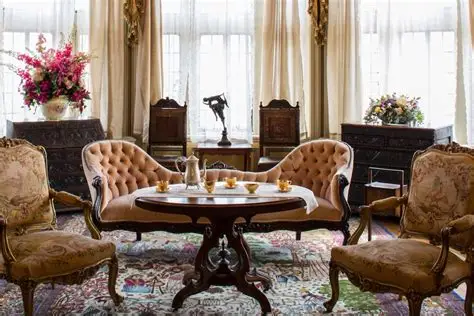
How to Identify Antique Pieces
Identifying genuine antique pieces is an essential skill for collectors, decorators, and anyone passionate about history and craftsmanship. With so many reproductions and modern pieces mimicking older styles, knowing what to look for helps you make informed decisions and discover authentic treasures. This guide will walk you through key features to examine when identifying antique furniture and decor.
Understand What Defines an Antique
An item is generally considered antique if it is at least 100 years old. This age threshold separates true antiques from vintage or collectible items. Knowing this helps set a baseline for your evaluation and narrows down the style periods to study.
Examine Craftsmanship and Construction Techniques
One of the most reliable ways to identify antiques is by looking closely at how the piece was made. Antique furniture often shows evidence of hand craftsmanship that differs from modern machine-made items.
- Joinery: Look for hand-cut dovetail joints, mortise-and-tenon joints, and dowels rather than nails or staples. These techniques indicate traditional woodworking skills.
- Tool Marks: Handmade pieces often bear subtle tool marks or irregularities that machines don’t produce. Check the undersides or backs of drawers and tables for these signs.
- Wood: Older furniture was usually made from solid hardwoods like oak, mahogany, or walnut. Plywood and particleboard are modern inventions and suggest a newer piece.

Inspect Hardware and Fixtures
Original hardware helps confirm authenticity. Antique screws have uneven slots and often show wear consistent with age. Modern screws tend to be uniform and machine-made.
- Look for old brass or iron hinges, handles, and locks. These should show some tarnish or patina.
- Check if hardware is attached with hand-forged nails or screws rather than modern fasteners.
- Avoid pieces with replaced or mismatched hardware unless well-documented restorations are provided.
Evaluate the Finish and Patina
The surface finish of antiques reveals their age and usage over time.
- Patina refers to the natural aging of wood and finishes that create a warm, rich surface. It develops from exposure to air, light, and handling over decades.
- Avoid pieces with perfectly smooth, glossy finishes or overly bright colors that suggest recent refinishing or mass production.
- Look for minor scratches, fading, or uneven wear that indicate genuine aging.
Recognize Style and Design Periods
Familiarity with historical furniture styles is crucial. Each era has signature elements that can help date a piece:
- Queen Anne: Cabriole legs, scalloped edges, and refined proportions.
- Chippendale: Elaborate carvings, ball-and-claw feet, and mahogany wood.
- Sheraton: Neoclassical simplicity with straight lines and delicate inlays.
- Victorian: Ornate carvings, dark woods, and heavy upholstery.
- Study reference books or guides on furniture history to improve your ability to place pieces in the correct timeframe.
Look for Signs of Wear and Repairs
Genuine antiques show signs of age that are difficult to replicate perfectly.
- Check for wear in places where natural use occurs, like drawer handles, chair arms, and feet.
- Minor cracks, shrinkage, or woodworm holes can indicate authentic aging.
- Repairs done long ago often use traditional materials and techniques, unlike recent fixes with modern glues or screws.
Check Provenance and Documentation
When possible, verify the history of the piece. Provenance can include receipts, appraisals, or family records that confirm age and origin. Provenance adds value and confidence in authenticity.
Final Thoughts
Identifying antique pieces requires attention to detail, knowledge of traditional craftsmanship, and an understanding of historical styles. By carefully examining joinery, hardware, finishes, and wear patterns, you can distinguish authentic antiques from reproductions. With practice, you’ll develop a keen eye to find genuine pieces that not only enhance your space but also carry rich stories from the past.







